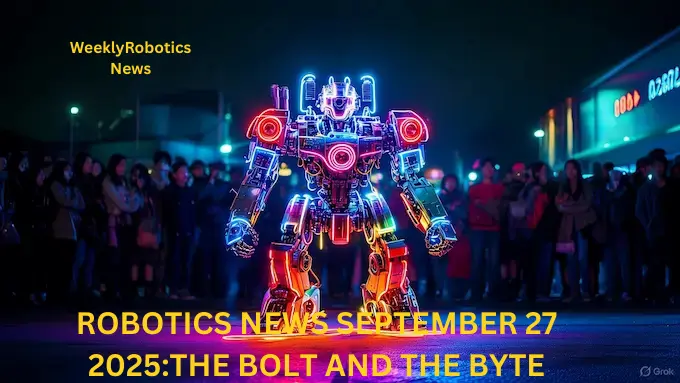Table of Contents
1. Peak SF: Robot Fight Night Returns Next Edition ROBOTICS NEWS SEPTEMBER 27 2025
San Francisco’s underground fight scene just got an upgrade robot battles! our top story for weekly ROBOTICS NEWS SEPTEMBER 27 2025 UFB promotion hosts events in secret locations, featuring robots from Unitree and Booster Robotics controlled remotely with Nintendo Joy-Cons. Is this the future of combat sports?
Beyond spectacle, the matches function as a public stress-test for mobility, teleoperation latency, and robustness in unpredictable situations, valuable data for teams working on remote operation, industrial telepresence and public-facing robots. Investors attending such events see a double benefit PR for consumer-facing robots and a low-cost way to observe control systems under pressure. Critics worry about normalizing simulated violence, but fans argue the events humanize robots and create an approachable bridge between engineering and popular culture.
The crowd is young and tech-heavy, software engineers, investors and curious locals. reflecting a broader cultural rebound in SF’s tech social scene. Organizers say proceeds help cover venue costs and grow a recurring schedule; producers envision leagues, sponsorships and niche merchandising if interest continues. The next live stream is already scheduled, and the organizers hope soon will cement the event as an annual fixture.
2. Figure’s Billion-Dollar Leap: Nvidia Joins to Scale Humanoids
Figure announced a Series C pushing its committed capital past $1 billion with Nvidia among the strategic backers aiming to accelerate humanoid manufacturing and AI scale .Our 2nd story for weekly ROBOTICS NEWS SEPTEMBER 27 2025
Figure’s haul is notable for size and composition: beyond cash, the round includes GPU and infrastructure partnerships that speed simulation and embodied-AI training on the company’s Helix platform. Brookfield’s involvement gives Figure access to diverse real-world residential environments crucial for collecting the varied data needed to teach humanoids generalizable object handling and navigation.
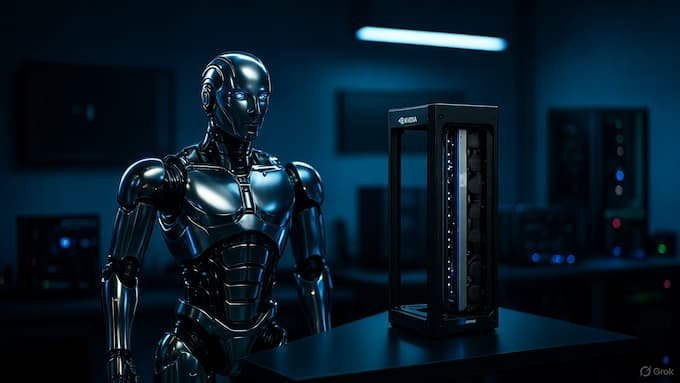
Figure plans to ramp BotQ production, invest heavily in GPU compute for Helix, and use large-scale real-world data to close the gap between simulation and reality,a persistent bottleneck for embodied robotics. Nvidia’s participation matters because GPUs materially shorten training loops; the company’s AI stack is fast becoming the industry norm for robot perception and policy learning. Analysts say this combination of hardware scale, real-world data and manufacturing could change timelines for commercial humanoids.
3. John Deere’s Autonomous Tractor and LG Chem’s Smart Lab: Workhorse Robotics Arrive
Autonomous tractors and robotic labs are the quiet revolution reshaping farms and research benches, John Deere and LG Chem lead the charge with practical, production-ready systems.
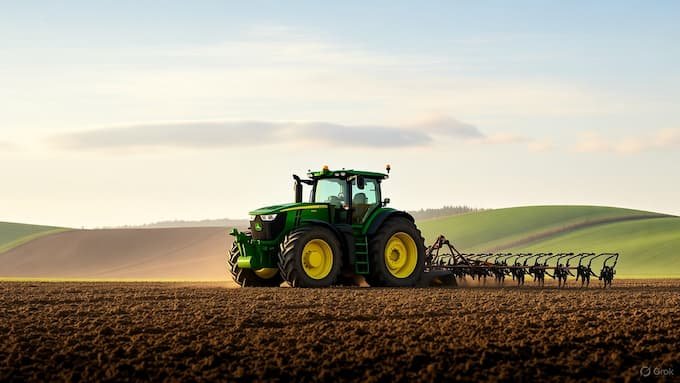
John Deere’s new autonomous field robot promises continuous precision seeding and harvesting while reducing labor dependency,an answer to labor shortages and a vehicle for sustainable input management. The company positions the tractor for mid-to-large farms with cost-savings driven by improved seed placement, lower fuel and optimized inputs. Meanwhile, LG Chem’s Autonomous Smart Lab automates battery material analysis, accelerating R&D while lowering human exposure to hazardous chemical processes. Both advances show robotics extending into high-impact, productivity-critical roles.
What’s notable is the pragmatic framing: these robots aren’t flashy demos,they’re framed as productivity tools with ROI sentences. For agriculture, autonomy means round-the-clock field operations and better data collection for precision farming. In labs, automation shortens experimental cycle times and funnels human talent into high-value design. Implementation hurdles include maintenance networks, sensor supply chains, and operator training, but early adopters report meaningful productivity gains. This was most facinating 3rd story for weekly ROBOTICS NEWS SEPTEMBER 27 2025
4. Siloam Hospitals Brings Brainlab Cirq to Indonesia Neurosurgery Upgraded
Lede: Siloam Hospitals Lippo Village unveiled the Brainlab Cirq robotic suite, marking Indonesia’s first major neurosurgical robot installation—aiming to raise surgical precision and patient access
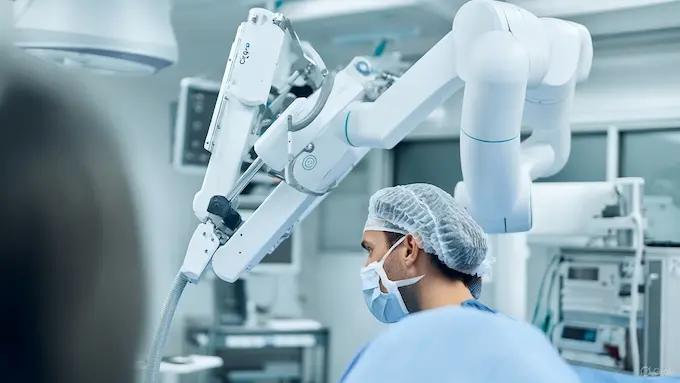
The Brainlab Cirq couples robotic guidance with surgical navigation, improving targeting accuracy and minimizing invasive exposure during delicate brain operations. Hospital leadership emphasized training: the investment pairs machines with upskilled neurosurgery teams to ensure technology translates to better outcomes. Executives framed the move as a regional capability upgrade, reducing patient need for overseas medical travel.
Clinicians report tighter margins of error and faster recovery timelines in early cases. The addition follows Siloam’s earlier adoption of robotic platforms (Da Vinci Xi and CUVIS Joint), pointing to a sustained modernization trend. The hospital’s approach buy tech, invest in training, collect outcome data mirrors best practices in medical robotics adoption globally.
5. KAIST’s Viral Moonwalk: Locomotion Benchmarks Move Forward
Lede: A KAIST humanoid that can moonwalk and clock running speeds up to 12 km/h has gone viral but the demo’s real value lies in locomotion advances for practical tasks.
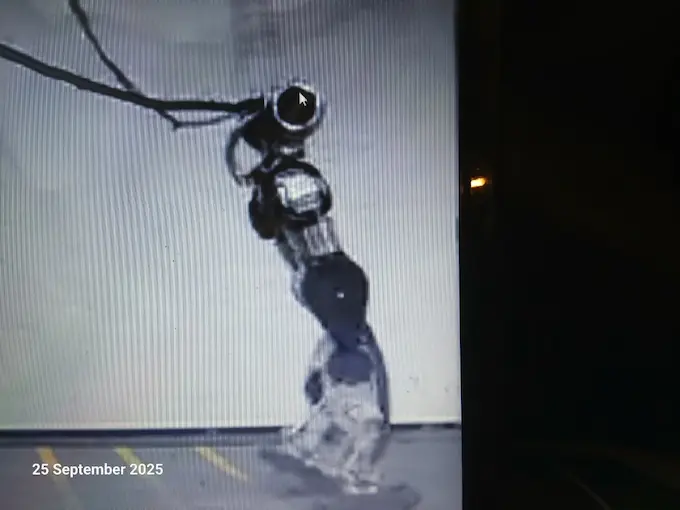
KAIST’s video shows refined gait transitions, balance algorithms and actuator control that push academic benchmarks. These locomotion gains feed into real-world use cases: search-and-rescue in uneven terrain, robust warehouse navigation, and assistive mobility. Academic demos still face commercialization roadblocks battery life, cost, and safety but the public attention boosts recruiting, partnerships and funding for further R&D.
Industry watchers highlight the role of academic labs: they set the technical bar that later industry products must meet. KAIST’s demo is also a PR asset, making complex robotics accessible to a broad audience. The question now is translation: can those control gains be packaged into affordable, reliable products? Time and funding will tell.
6. ECOVACS GOAT A3000 and the Rise of 360° Vision Lawncare
Lede: The ECOVACS GOAT A3000 brings 360° LiDAR, ToF sensors and fast recharge to residential lawncare targeting yards up to three-quarter acre with wire-free mapping.
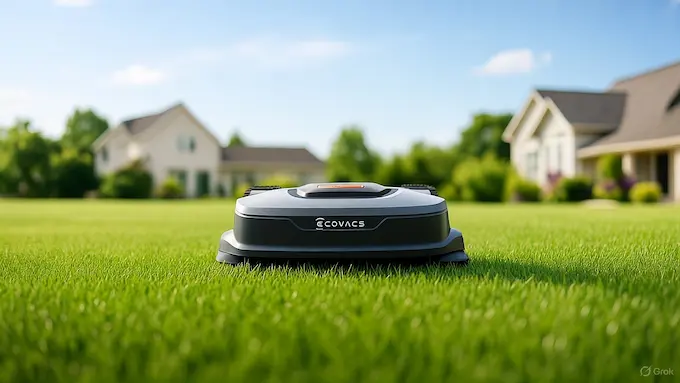
Advances like dual LiDAR + ToF sensor fusion and 45-minute recharge cycles make outdoor robots practically useful beyond small lawns. Companies tout safety enhancements and wire-free operation to remove user friction, while battery tech improvements reduce downtime. Reviewers say setup can still be fiddly for complex yards, but once configured, machines run reliably.
Consumer robotics growth nudges new supply chains, sensors, battery packs and service networks that unlock broader adoption. For manufacturers, the trick is balancing cost with performance in a price-sensitive market. For end users, the attraction is time savings and predictable yard care.
7. TUM’s SEACLEAR: Autonomous Subsea Robots Tackle Marine Debris
Lede: An EU-funded system led by TUM pairs service boats, aerial drones and an autonomous subsea gripper to collect marine waste shown operational in Marseille.
SEACLEAR’s multi-agent architecture maps the seabed with sonar, scouts with drones, then dispatches a dive robot with a four-fingered gripper to retrieve debris. The gripper can lift heavy objects while remaining sensitive enough not to crush fragile materials. The system becomes economically viable at depths beyond 16 meters, according to project analysis.

Researchers faced a lack of labeled underwater training data; partners annotated thousands of images to train vision models. The project demonstrates how robotics and AI can scale environmental cleanup tasks that are otherwise unsafe, slow, and costly for human divers. Municipalities and ports are watching as an operational model for long-term coastal management
8. Serve Robotics Expands: Phantom Auto Assets and Teleoperation Strength
Lede: Serve Robotics acquired Phantom Auto’s assets for $5.75M, strengthening its teleoperation and remote control capabilities for last-mile delivery.
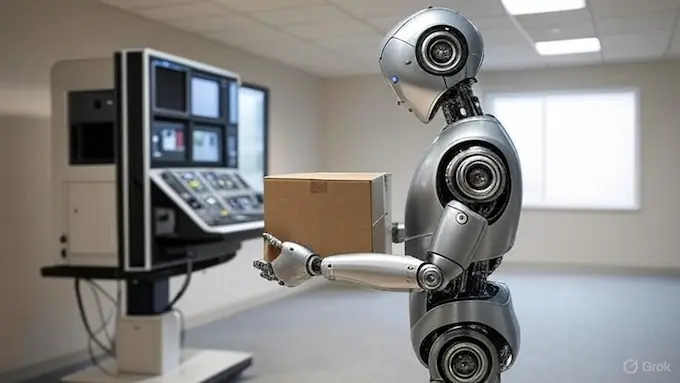
Serve’s acquisition enhances its Software & Data Services stack with low-latency teleoperation tech, a key capability when robots encounter edge-cases on complex sidewalks and urban routes. Phantom Auto’s tools reduce “glass-to-glass” latency a crucial metric for safe human-in-the-loop interventions. Serve plans to integrate these tools with its fleet to improve reliability and reduce operational downtime.
The move coincides with rising analyst interest in autonomous delivery platforms. As last-mile robotics edge toward commercialization, teleoperation remains a differentiator: it allows centralized human supervisors to resolve unusual situations quickly. For investors, the acquisition is a cheap but strategic bolt-on to improve fleet uptime and regulatory readiness.
9. Dyna Robotics Raises $120M Scaling Intelligent Robots for Industry
Lede: Dyna Robotics closed a $120 million Series A to scale intelligent mobile robots, marking investor confidence in autonomous systems for logistics and facilities.
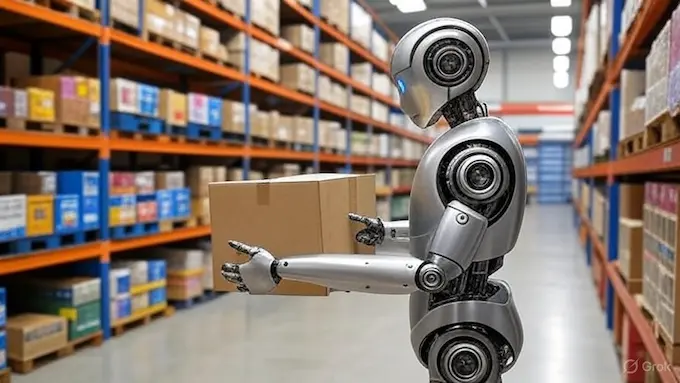
Dyna’s funding targets manufacturing of AMR fleets, improved perception stacks, and expanded enterprise deployments. The company pitches robots that integrate navigation, object handling, and enterprise software for warehouses and manufacturing floors. With labor shortages and e-commerce growth, investors see strong TAM for reliable AMRs that reduce cycle times and human strain. google Alerts 50 links
Challenges include hardware supply chains, location-based services, and multi-vendor integration. Dyna plans pilot rollouts with logistics partners and claims the new capital will underwrite production capacity and field service. For procurement teams, Dyna’s business case centers on throughput gains and predictable maintenance economics.
10. Nvidia’s Strategic Push: $500M Talk with Wayve and the Autonomous Stack
Lede: Reports show Nvidia discussing a potential $500 million strategic investment in Wayve an alignment that could accelerate mapless driving and GPU-powered autonomous stacks.
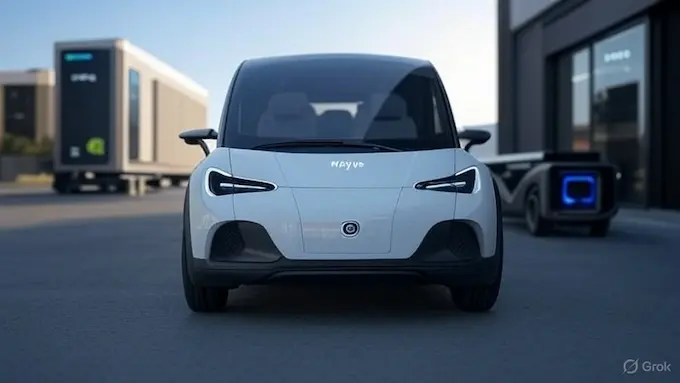
Wayve’s mapless, end-to-end driving stack pairs well with Nvidia’s DRIVE AGX and compute leadership. A strategic capital infusion could push Wayve’s commercial deployments and give Nvidia a stronger partner for training autonomous policies on Blackwell/Thor-class hardware. The collaboration would blend Wayve’s ML-first navigation with Nvidia’s sensor fusion and fleet orchestration capabilities. Peak San Francisco
The move aligns with Nvidia’s broader strategy to expand into autonomous vehicle compute and SaaS. For Wayve, the investment adds runway and validation; for the industry, it signals increasing consolidation where AI compute vendors partner tightly with stack providers. Regulatory and safety validation remain hurdles, but the combination could shorten commercialization timelines for L3/L4 fleets.
11. ARIES: Lebanese Rescue Robot Wins Global Recognition
Lede: Lebanese engineer Abbas Diab’s ARIES rescue robot designed for rubble search and hazardous zones won iCAN-2025 recognition and shows how small teams innovate in disaster robotics.
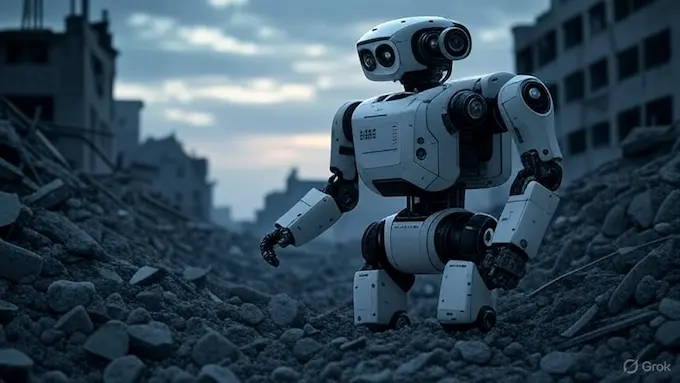
ARIES evolved from an unexploded ordnance project into a full exploration and intervention robot: SLAM navigation, thermal imaging, depth cameras, a multi-purpose arm, gas sensors and even a sprinkler system for fire suppression. Its modular design and dual autonomous/manual modes make it suitable for civil defense teams operating in collapsed structures.
The device’s recognition at iCAN highlights how focused, locally-driven innovation can meet regional emergency-response needs. For rescue teams, ARIES promises faster scene assessment, reduced human risk, and richer sensor data to guide extraction. The next step is field trials with civil defense units and sourcing partners for scaling ruggedized manufacturing.
12. Festo’s EHMD Grippers Expand Lab Automation Options
Lede: Festo added new sizes to its EHMD electric gripper line targeting life-science automation with compact, precise handling for plates, vials and other small items
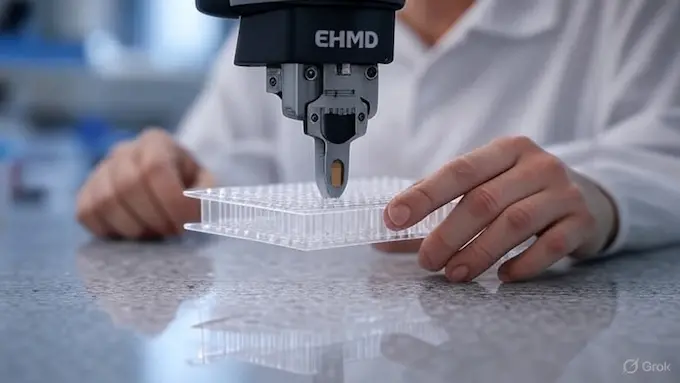
The 40 mm and 50 mm EHMD sizes expand tissue- and sample-handling options in in-vitro diagnostics and genomics workflows. Optional Z-compensation reduces changeover time and supports high-throughput sample prep. Combined with 3D gantries and cameras, EHMD modules enable integrated QC, barcode reading and robotic sample handling features increasingly vital in automated labs. Peak San Francisco
Festo’s presence at upcoming Pack Expo also highlights workforce-upskilling efforts: the company offers career-technical education tools to prepare technicians for automation-era jobs. The push connects product updates with workforce pipelines critical for adoption.
13. Tesla Optimus: Progress, Talent Turnover, and Pilot Programs
Lede: Tesla’s Optimus humanoid continues incremental development: prototype iterations, piloted trials and organizational reshuffles recently including the departure of an AI lead to Meta.
Optimus has showcased walking demos and simple task execution but faces classic challenges: robust manipulation, energy density and safe human interaction. Tesla’s strategy appears to fuse FSD-derived perception with humanoid hardware; trials in controlled factory settings aim to capture repetitive tasks. The exit of a key AI leader raises questions about continuity, but Tesla’s deep resource pool and integration with manufacturing expertise keep Optimus in the headlines.
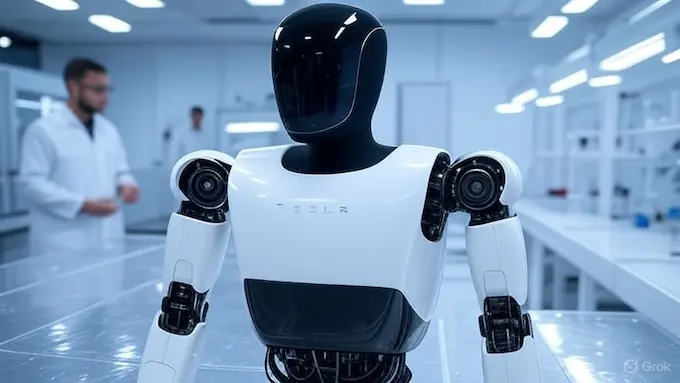
Market watchers say Optimus will need clear, revenue-bearing pilot programs (warehousing, repetitive assembly) before valuations can justify the R&D spend. Public perception and regulation remain soft constraints: transparency about safety and clear use-cases will define adoption speed.
14. Robotics for the Planet: Underwater Cleaners and Agricultural Drones
Lede: From subsea trash collectors to precision ag drones, 2025’s robots target environmental impact as much as convenience
TUM’s SEACLEAR project shows scalable marine-cleanup architectures; in agriculture, drones and autonomous tractors from startups and incumbents enable targeted spraying, remote sensing and yield mapping. Environmental robotics often finds mixed funding—NGOs, gov grants and commercial pilots—but the ROI in long-term cost reduction and regulatory compliance drives adoption.
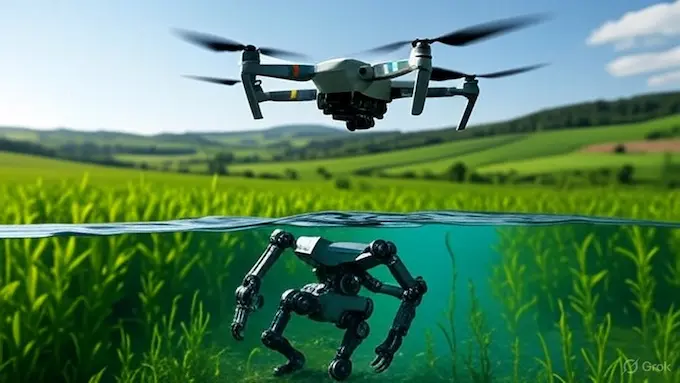
15. Robotics Jobs & Skills: Festo’s Upskilling Shows the Workforce Shift
Lede: As more robots enter factories, farms and labs, training programs like Festo’s are crucial to prepare technicians for automation-era roles.
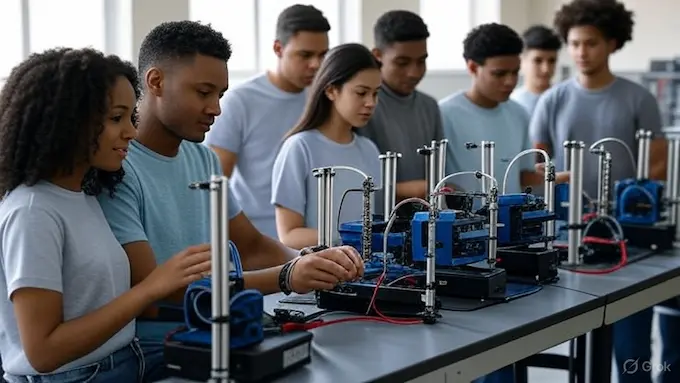
Festo’s hands-on learning systems and Pack Expo presence spotlight upskilling for mechatronics, automation and robotics maintenance. Industry players insist that technical training, on-the-job robotics familiarization, and curriculum updates are non-negotiable for scaling deployments. Companies that invest in human capital gain faster ROI: fewer downtimes, better field servicing and more confident customers.
Sources & References Robotics News September 27, 2025
https://technologymagazine.com/news/figure-series-c-funding
Siloam Unveils First Brain Surgery Robot in Indonesia – RRI
360-Degree Vision Robot Lawnmowers : ECOVACS GOAT A3000 – Trend Hunter
Figure Partners with Nvidia to Accelerate Robot Deployment | Technology Magazine
https://digitalhabitats.global/blogs/cobots-1/teslas-2025-optimus-robot-update-10-trillion-revenue
What is covered in Robotics News September 27 2025?

This edition of Robotics News September 27 2025 highlights 15 major global updates, including humanoid robots, medical robotics, AI breakthroughs, and funding stories.
Why is Robotics News September 27 2025 important for readers?
The Robotics News September 27 2025 roundup captures the latest developments shaping automation, robotics companies, and future AI-driven technologies worldwide.
Which companies are featured in Robotics News September 27 2025?
In Robotics News September 27 2025, we cover Tesla, Boston Dynamics, Figure AI, Nvidia, John Deere, Festo, and other leading robotics innovators.
How can I benefit from reading Robotics News September 27 2025?
By reading Robotics News September 27 2025, you gain insights into robotics trends, upcoming products, funding shifts, and innovations affecting industries like healthcare, logistics, and agriculture.
Does Robotics News September 27 2025 include startup updates?
Yes, Robotics News September 27 2025 reports on new funding rounds, acquisitions, and breakthroughs from startups driving robotics forward.
Where can I find future editions after Robotics News September 27 2025?
All weekly editions, including Robotics News September 27 2025, are published on our website under the “Robotics News” category every Saturday.

